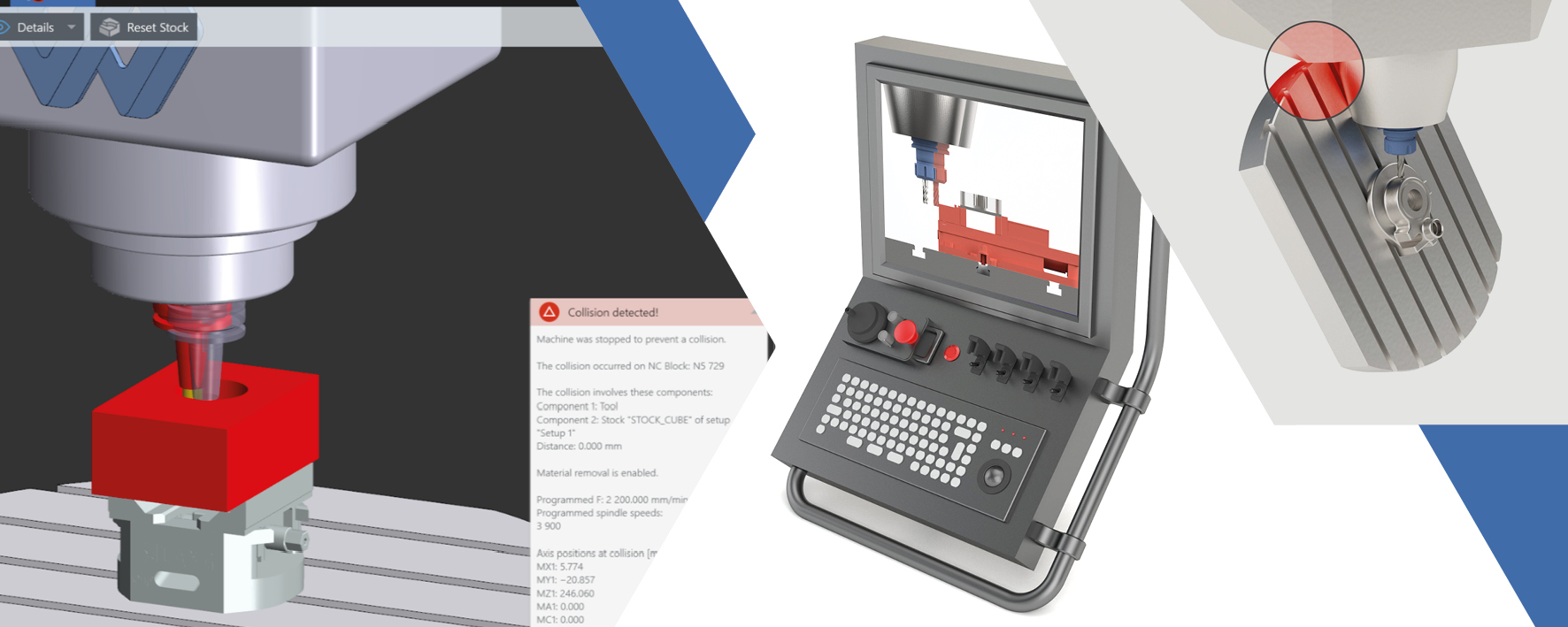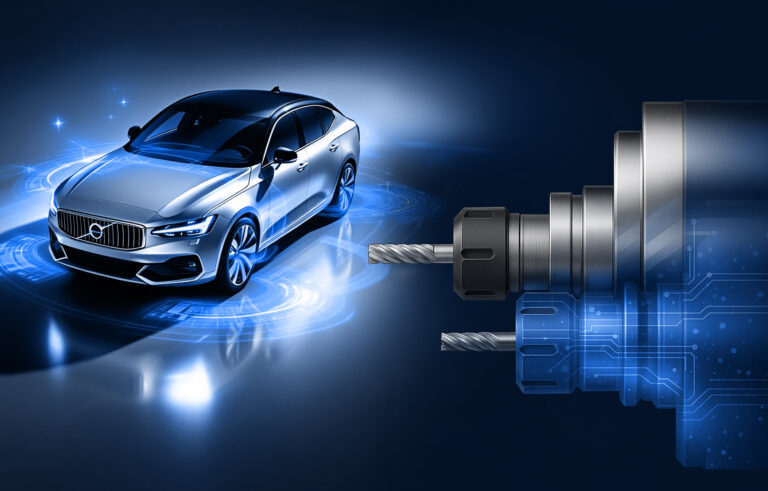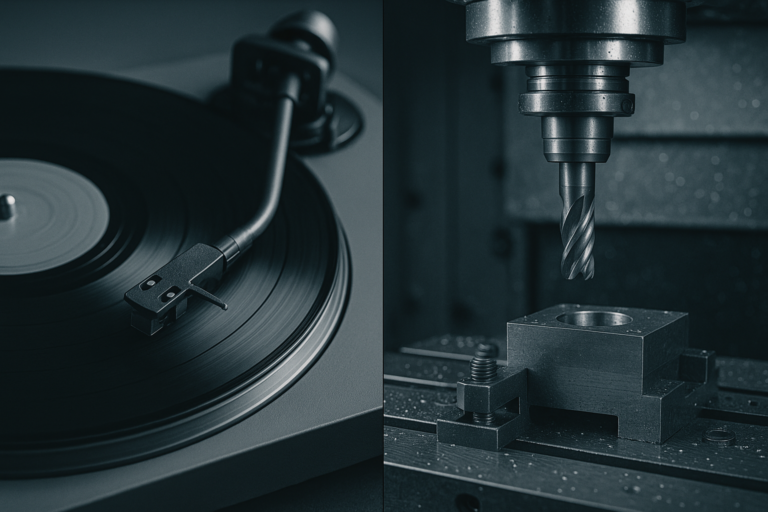
By Dr. Yavuz Murtezaoglu
A Bold Vision for the Manufacturing Industry

In my last article “A Brief History of Simulation in CAM Software“, I talked about my 30 year journey in developing and deploying CAM simulation technology. In this article, I would like to offer my insights on a current topic that excites me a lot because it concerns the immediate future of the entire industry and how CNC machining can be greatly improved.
From Automotive Safety to CNC Machining

First of all, I would like to share a statement from Volvo, a car maker known for placing great emphasis on safety. Volvo has built a reputation for making strong, sturdy cars that make drivers feel safe behind the wheel. They made the following statement and announced it publicly:
“Volvo has set a bold vision that no Volvo car should be involved in a fatal or serious injury crash by 2030”
Now, imagine transferring this bold vision to CNC machining and eliminating all CNC machine crashes by 2030. For an engineer, this is a very exciting challenge because there are large number of technical problems to solve along the way.
Is this vision achievable by 2030? Let’s take a look together.
Our Journey with the Collision Avoidance System (CAS)
At ModuleWorks, our journey started 10 years ago with a European machine tool builder developing high-end 5-axis CNC machines. They asked us to provide a real-time simulation capable of identifying collisions and stopping the machine before a crash could occur. With the support and close cooperation of the CNC control manufacturer, we were able to get data on the position of the machine components about one second into the future. This one second buffer allowed us to calculate the trajectory of all the moving parts of the machine and the material removed from the workpiece and reliably determine whether a collision was imminent. We called this CAS – Collision Avoidance System.
When we took on this challenge, we knew our simulation engine was fast and powerful enough to detect collisions in real time thanks to our collaboration with one of the world’s largest machine tool vendors who had developed their collision avoidance solution based on our technology. But it was only when we started work on an industrial PC, where the CAS algorithms receive signals directly from the machine’s CNC and PLC, that we realized the true scope of the challenge.
Understanding the True Nature of CNC Machines

A state-of-the-art CNC machine is like a turntable playing an LP without knowing what it is playing: The turntable strictly follows the grooves on the LP but has no idea if it is playing jazz or pop music. If there is a defect on the LP, it might play the same track forever. Fortunately, a turntable does not crash when the LP is defective, but it doesn’t know “the context” of what it is doing. Similarly, a CNC machine gets an NC program and runs this program strictly, without knowing what the NC program is going to do. Basically, a CNC machine must trust the user to feed it with a good NC program, either written manually on the machine control or generated by a CAM system.
Most CNC machines have a tool table that numbers all the tools, and they have some basic data for performing the tool radius and tool length compensation to deal with tool wear and to adjust the motion accordingly.
A simulation system running on an IPC with real time look-ahead access to a CNC control can create all the positions and orientations of the moving machine parts (table, spindle etc.) from the NC program. It can also update the in-process workpiece during machining. This is critical for distinguishing between real and false collisions and is only possible if the removed material is properly included in the calculation.
Overcoming Engineering Challenges
After several person-years of intensive work from the ModuleWorks team, the machine tool vendor and the control maker, we resolved hundreds of technical challenges and achieved our goal: we were able to safely avoid collisions in both manual and automatic modes without raising any false collisions.
What does this mean? The quality of a collision avoidance system is based on two important factors:
- It should never miss a real collision, which means that the machine should never crash.
- But, at the same time, it should never raise a false collision alarm and stop the machine, since during CNC machining an abrupt stop in machining would create marks on the workpiece and reduce productivity. Also, the operator might turn off the collision checking system if it signals too many false collisions.
As an engineer, I can list many cases that could have resulted in missed or false collisions. We were able to resolve all of them, one by one. What we achieved was a herculean effort and worthy of a book on its own.
There’s an engineering saying: “Once you’ve resolved the biggest bottleneck and problem, further bottlenecks reveal themselves”. An engineer is never truly finished; they remain restless until all bottlenecks and issues have been resolved.
Solving the Job Setup Challenge

This is exactly what happened to us. CAS was working reliably but the tool and holder geometries as well as the clamping shape had to be entered exactly to ensure correct operation. As mentioned above, a CNC machine doesn’t know what it’s about to “play”. Even if the machine has the NC program for the next job, it lacks the concept of a “Job Setup”.
Job Setup includes all the geometry data for the tool, tool holders and work-holding components which are specific to each job. The machine geometry never changes, but each job requires a different setup.
To solve this, we provided a user interface for machine operators to enter the Job Setup data interactively. As most CAM systems already have this data, we also created a standardized data format that enables the Job Setup to be imported.
The Job Setup data format evolved into MDES, which stands for Manufacturing Data Exchange Specification. This free-to-use and well-documented specification is available to the entire industry and has been adopted by many of the leading CAM vendors, machine tool vendors and control makers. Why did we do this?
Creating an Industry Standard
At the beginning of this article, I drew a parallel between Volvo’s vision as a car maker and the vision of our industry to eliminate machine crashes by 2030. With CAS installed on all CNC machines and MDES data coming from different CAM systems, there is a realistic chance of achieving this vision.
ModuleWorks’ CAS is well-established in the industry, but other companies also provide collision avoidance solutions using their own technology. MDES offers all these companies an open, free-to-use format for seamlessly exchanging data. This makes it easier and more cost-effective for manufacturers to implement collision avoidance in their digital workflows. The whole industry benefits, bringing it closer to zero-crash machining.
For some providers, integrating CAS into a CNC machine and control is a big step. As an intermediate solution, vendors offer an offline simulation (not real time) on the CNC control to validate the NC program before machining. MDES supports this too because it includes the Job Setup definition required by the offline simulation.
What's Next in Our Journey
I hope this article has provided helpful insights into some of our current and ongoing projects.
In my next article, I will explore the future and how ModuleWorks envisions the evolution of these technologies in a Digital Twin framework. I will also explore the integration of cutting physics with the collaboration of tool manufacturers, CNC control makers, CNC machine tool builders and CAM vendors. This path promises great strides in automation and productivity for CNC machining, but it also requires closer cooperation with the stakeholders. Let’s stay tuned for the next article.
About ModuleWorks
ModuleWorks is at the forefront of digital manufacturing software, playing a key role in enabling the efficient production of increasingly complex parts in an environmentally sustainable way. As a strategic partner to leading CAD/CAM vendors, CNC control makers, machine tool builders and cutting tool manufacturers, ModuleWorks develops software that powers solutions throughout the manufacturing industry which contributes to 16% of global GDP worth $16 trillion per year.
Founded in 2003, ModuleWorks has grown to over 200 developers and already invested 2000 person-years of software development in toolpath and simulation technologies that form the core of manufacturing processes. In the CAD/CAM area alone, ModuleWorks has a market share of 90%, enhancing the performance and quality of over 500,000 installed seats of CAD/CAM and CNC software worldwide. With a comprehensive portfolio of cutting-edge software components and the capacity to address emerging and niche technologies like AI, cloud, automation, additive, robotics and digital dentistry, ModuleWorks is committed to shaping the future of digital manufacturing with its partners, empowering the industry to Get There Faster.